Petra: Antique City
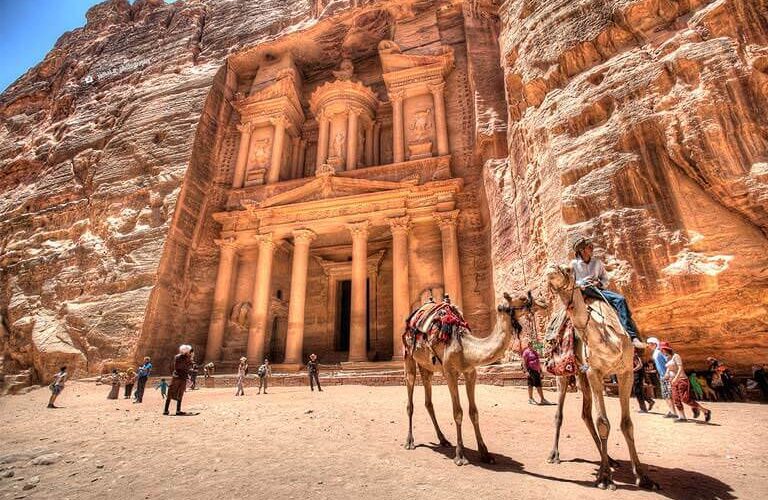
The ancient city of Petra is one of the largest archaeological sites in the world with its tomb and temple architecture made of red sandstone, churches, public buildings and other structures, water channels, cisterns, tunnels and dams surrounding the city. The structures, which are a combination of Hellenistic architecture and Nabataean rock architecture, especially El-Hazne, Urn Tomb, Royal Tombs, El-Deir Monastery and Corinthian Temple, are examples of unique artistic achievement and architecture.
Since the city has a sheltered structure, it has been used as a settlement since the prehistoric period. B.C. The region, which passed under the control of the Nabataean kingdom in 400 BC, had the most glorious times in this period. The ancient city of Petra built magnificent works in its heyday due to the location of the city. Because to reach the city, you go through a valley called Siq, which narrows to a few meters from place to place. The city is approximately 1 km inland along the narrow valley. This feature provided great advantages to the Nabataeans regarding the protection of the city in ancient times. In addition, the ancient dam built in the valley met the water needs of the city in ancient times and protected the city against floods.
The location of the city, close to trade and caravan routes, enabled it to become rich rapidly and Petra became the center of the kingdom. During this period, mausoleums carved into sandstone rocks, magnificent temples, rock tombs, houses and trade houses were built. M.S. In 106, the city came under the rule of the Roman Empire. With the adoption of Christianity by the empire, the city turned into a Christian city. With the division of the empire into two, Byzantine domination and influences are seen in the city. The city, which passed under the control of the Umayyads from 661 to 750, and then the Abbasids, was abandoned in the 1300s due to the change of trade routes.
Petra was discovered by Swiss traveler Joham Burckhardt in 1812. It was included in the UNESCO World Heritage List on December 7, 1985, and was accepted as one of the new seven wonders of the world on July 7, 2007.
Al-Hazna
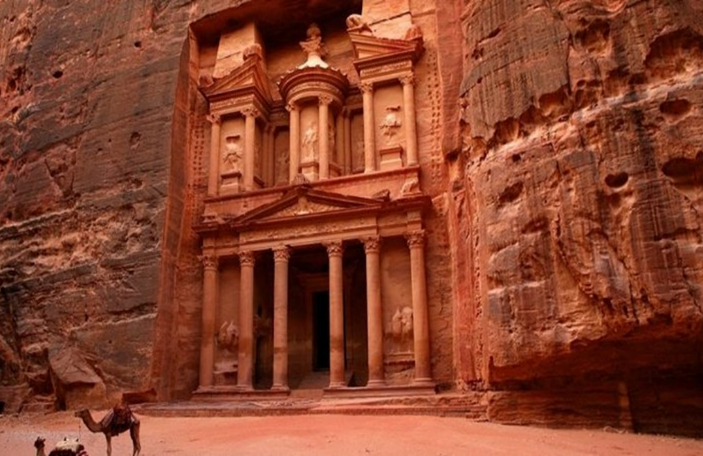
It is a temple with a height of 39.1 and a width of 25 m. It was carved into a solid rock. Hellenistic architectural influences can be seen with features such as triangular pediments and Corinthian columns. There are divine figures, animals and flower decorations on the front. In addition, geometric motifs seen in the early Nabataean period can be seen in the decoration of the building. Amazon figures draw attention in the façade decorations. In the center, there is the crown of Isis, under it Medusa and the eagle, which is believed to take the dead to heaven. The two figures just below are thought to be Roman twins Cartor and Polox, who took the dead underground. There are four burial chambers underground. As a result of the investigation of the items found in the tombs, it was understood that they belonged to the period of King IV Arates. In 80% of the coins found in the excavations, the Nabataean king IV. There is a depiction of Aretas. It is known as the Treasure because Bedouins and pirates thought they hid their treasures here. In fact, with the thought that there is a treasure inside the samovar symbol at the top of the El-Hazna, many shots were fired here and these bullet traces can still be seen today.
The Siq
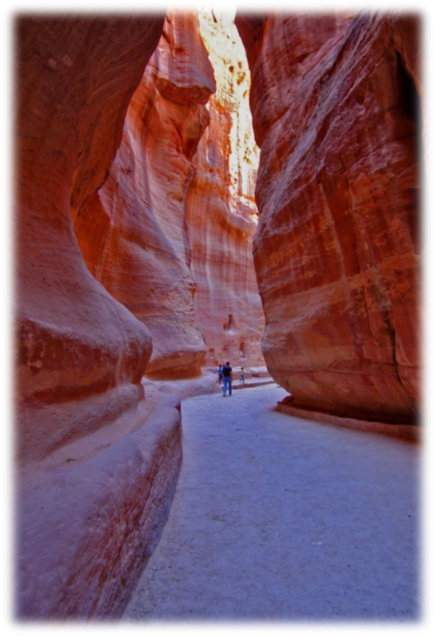
It is the starting point of Petra Archaeological Park. A path that winds through narrow crevices and high cliffs, The Siq is a 1.2 kilometer gorge. The Siq, which was formed by the carving of sandstone cliffs separated by earthquakes by centuries of water floods, reaches a width of 5 meters in places and a height of 91-182 meters.
There are reliefs and decorations between the walls. The most famous of these is the Camel Caravan Relief relief with 2 camels walking opposite each other and the human figure in front of them. When you continue along the passage, you reach the most valuable structure of the ancient city, El-Hazne.
Royal Tombs
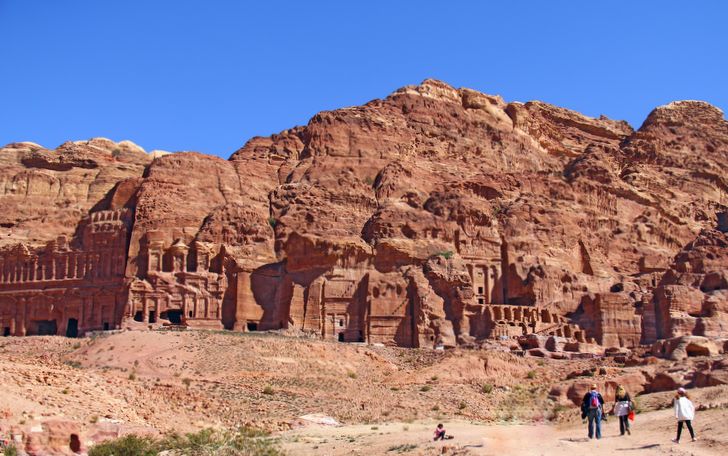
Opposite the Roman Theatre, they are the most magnificent of the colossal tomb façade, located on a large cliff to the north of El-Hazne. The royal tombs, called Royal Tombs, are larger and more magnificent than other monumental tombs. The first of the tombs is the Urn Tomb, which was later used as a Byzantine church, the Silk Tomb, which draws attention with its colorful sandstone rocks, the unfinished Corinthian Tomb inspired by Nero’s Golden Palace, the Palace Tomb built in the appearance of a Roman palace, the Sextus Florentinus Tomb built for Sextus Florentinos, Roman Soldier The Tomb consists of the Obelisk Tomb and the Lion Tomb.
Urn Tomb
It is necessary to climb a long staircase to reach the structure, which is located on a high level on the mountain side. There are many columns in its forecourt. There are three burial chambers inside. The main room is huge and has three asps along the back wall that were built when it was converted into a church. M.S. on the back wall There is an inscription in 447 BC that says it was consecrated as a church by Bishop Jason.
Silk Tomb
It is a small tomb located right next to the Urn Tomb. The name “Silk” comes from the rich color of the sandstone. M.S. It is thought to have been built in the first half of the 1st century. The width of the entrance door is 10.8 meters and the length is 19 meters. There are four columns in total, two on each side of the door.
Corinthian Tomb
While Hellenistic figures can be seen on the upper part of the building, Nabataean style porticoes can be seen on the lower part. M.S. It was built between the years 40-70. The width of the building is 27.55 meters and the height is 26 meters. There are four water pools in the building to be used in cleaning rituals and there are four burial chambers inside.
Palace Tomb
Located north of the Corinthian Tomb, the Palace Tomb is 49 meters wide and 46 meters high. The lower part consists of twelve columns and four doors. There are eighteen columns on the door sill. Four doors open into four separate burial chambers. It got this name because it resembles a palace.
Sextus Florentinus Tomb
It is located northeast of the Palace Tomb. It was built for the Roman governor, Sextus Florentinos. The structure, which consists of two floors with a passage of 37.10 meters and a height of 9.16 meters, is covered with a Latino inscription.
Roman Soldier Tomb
B.C. 200- AD It was built between 200 BC. According to the finds, it is thought that the building was built during the Nabataean period and was renovated during the Roman period. There are four columns, two on each side of the entrance door. There are statues of soldiers in three niches above the entrance.
Obelisk Tomb
M.S. It was built between 40-70. It was built on an earlier structure with a Doric columned façade. There are four obelisks on the façade and a worn human statue in the middle. Downstairs is a dining room where they hold their annual feast to commemorate their dead.
Lion Triclinium (Lion Tomb)
Located in a narrow canyon, the Lion Tomb takes its name from two reliefs of lions carved on either side of its gate. However, these reliefs are now worn. It is a building where funeral banquets are held.
El-Deir Monastery

The largest structure in Petra carved into the rocks, El-Deir Monastery was built in the 1st century BC. Forty-seven meters wide and forty meters high, El-Deir was an important Nabataean temple. To reach the Monastery, one of the oldest known places of worship in Jordan and decorated with elaborate mosaics, it is necessary to climb to the top of a hill of 800 stairs. It was later used as a Christian church and crosses were carved on its back walls. That’s why it’s called a monastery.
Water Transport Systems

Just at the entrance to The Siq is a dam built by the Nabataeans. This dam is a complex engineering marvel designed to prevent devastating flooding. With the 4.8 m wide, 8 m high, 30 m long Mudhlim Tunnel that opens into the rocks and a complex weir system, flood waters are diverted into a strait, protecting the Siq and Al-Hazne from devastating flooding. The dam and tunnel protecting the city of Petra from flooding are actually part of a huge water management system. Being aware of the importance of controlling the need for water in the desert environment, the Nabataeans built more than 200 cisterns in different parts of the city, and they succeeded in transporting the far water resources to this crowded city. The water accumulated in the cisterns was carried to the city by the pipe system opened in the walls of the Siq. Since the sandstone cliffs absorb water, they covered the channels with ceramics to prevent loss. Thus, they had a continuous water source in the desert environment where the rain was less and the temperature reached 50 degrees.
Roman Road and Theater
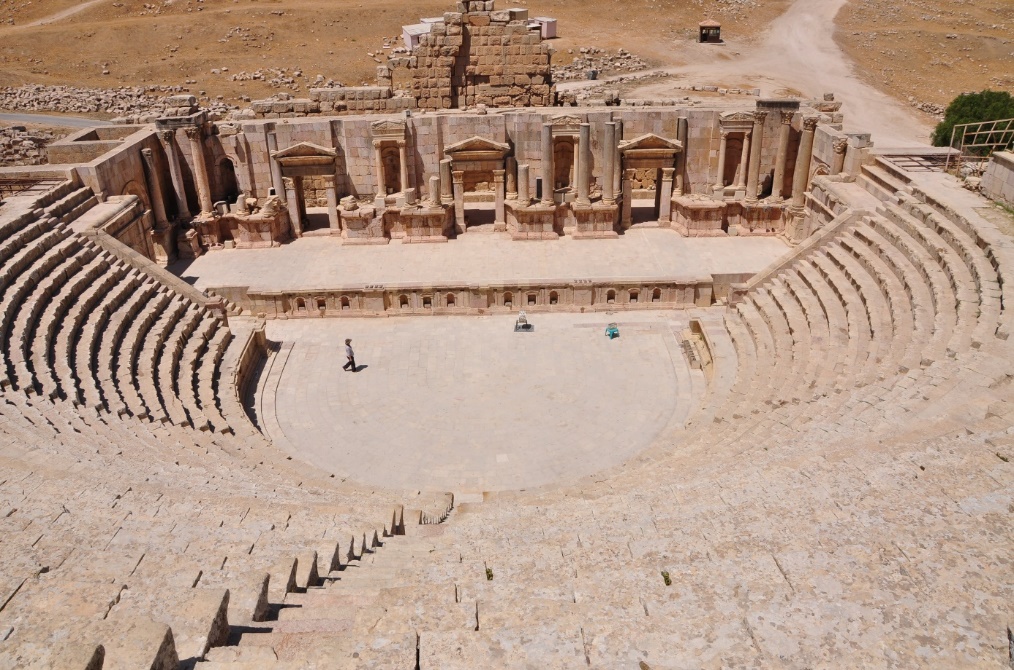
The theater was built in the 1st century with Hellenistic architecture and has the capacity to host 7,000 people. The theater, completely carved into the rocks, was greatly affected by the earthquake in 363. The seats go down to the floor level of the orchestra.
The columned road called Colonnaded Street, which is considered the center of the city after the ancient theater, extends to The Arched Gate. The Nymphaeum, which is open to the public and adorned with rock-cut sculptures with architecture based on Hellenic mythology, is located in the shadow of the only tree here.
Starting just after The Nymphaeum, the 6-metre-wide Colonnaded Street was a street where bustling crowds flowed into the center of this commercial city. The ruins of a market place selling spices and textiles can still be seen along the street. The Colonnaded Street ends with The Arched Gate, the arched structure of classical Roman cities.
Byzantine Church
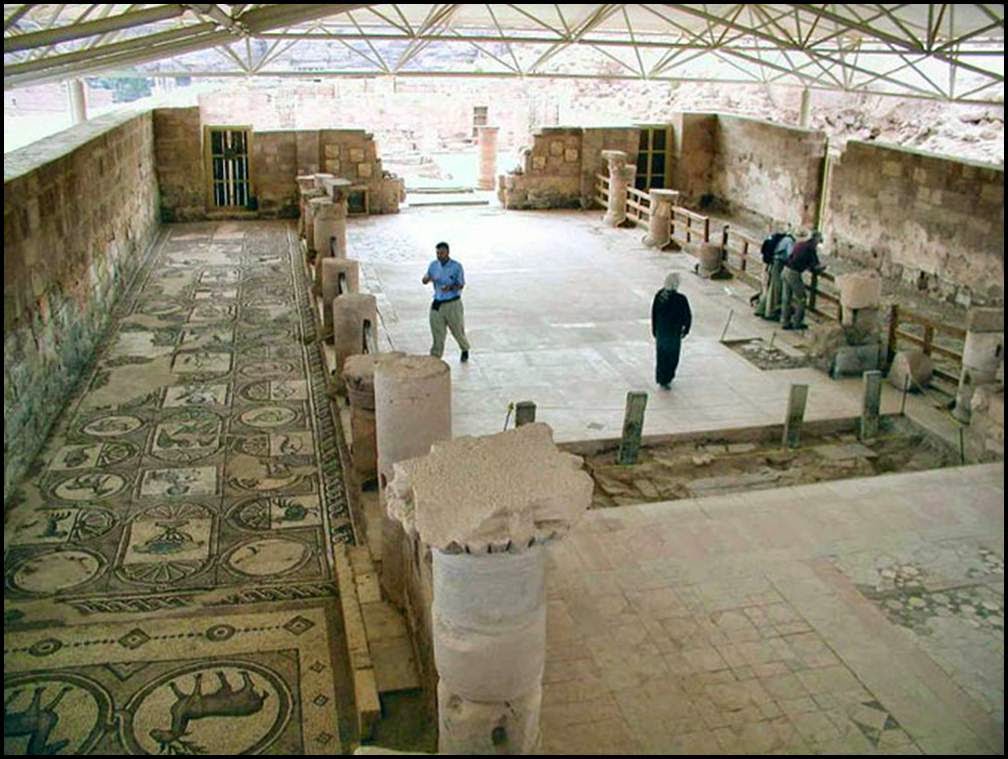
Located a few hundred meters from the colonnaded street, the church had only an apse and an entrance porch when it was first built. Seasonal Mosaics in the south aisle were also made during this period. M.S. In 500-50, the church was reshaped and the two-sided apse and atrium were added. It is a three-aisled basilica. During this period, mosaics were added to the north aisle and walls. The church’s side aisles are paved with 70 square meters of mosaics featuring various animals and personalities of the seasons, oceans, and wisdom.
The conservation problems of this magnificent city are as follows;
The natural decay process of the sandstone and the destruction caused by the wind are the most important natural protection problems. However, the fact that the region does not receive rain provides a plus for protection.
Since the region is close to fault lines, earthquakes are frequent. Earthquake poses a serious threat to structures in the region.
Especially in certain periods, threats arise from tourism intensity. In narrow areas such as the Siq, the entrance to the city, human density can cause serious destruction. For this reason, it is necessary to enter the city in certain groups and to visit the places where the threat is high, accompanied by a guide.
Sources:
https://whc.unesco.org/en/list/326
Thomas WEBER/ Robert WENNING-Petra Antike Felsstadt zwischen arabischer Tradition on griechischer Norm
National Geographic – Ancient Megastructures
http://petraantikkenti.blogspot.com.tr/
http://arkeofili.com/gizemler-dolu-7-uygarlik/



